Bandelier National Monument
UNDER CONSTRUCTION
09/19/13: Page Origin
Bandelier National Monument was named after Adolph F. Bandelier (1840-1914) an
anthropoligist who roamed New Mexico in the late 18th century, and spent a wrote
a book about pueblo indians, primarily in the canyon of the Rito de los Frijoles
(bean creek).
Bandelier studied the pueblo indians of the 18th century and listened to their
stories of their Anasazi ancestors, gathering anthropological information which
he presented in the "Delight Makers".
The book "The Delight Makers" is a fictional story about a family living in the
valley of the rito which describes the very day life of 13th century pueblo
dwellers and their culture.
This book is a great read, I wrote a report on in cultural anthropology and got
an 'A'.
"The Delight Makers" is available on line for free from the Gutenberg project
.
UNDER CONSTRUCTION
There are two parts of Bandelier, the valley of the Rito de los Frijoles(bean creek) and a remote, unexcavated ruin called Tsankawi.
You can take a walking, self guided tour of Tsankawi, but its a little hard to find (try 35.860066, -106.224589 on your GPS, it should get you to the parking lot).
I didn't get to take as many pics as I wanted so I'll add the this page when I get more.
The pueblo people living in the valley of the Rito de los Frijoles had agriculture (they raised corn and beans in small fields along the rito) dug out homes in the soft volcanic tuff along the North East canyon wall and, when they ran out of space in the cliffs, built free standing houses, above ground.
These were truly cliff dwellers.
The masonry work was simple as you can see in some of the pics.
ToDo: Pics of Tsankawi (part of Bandelier).
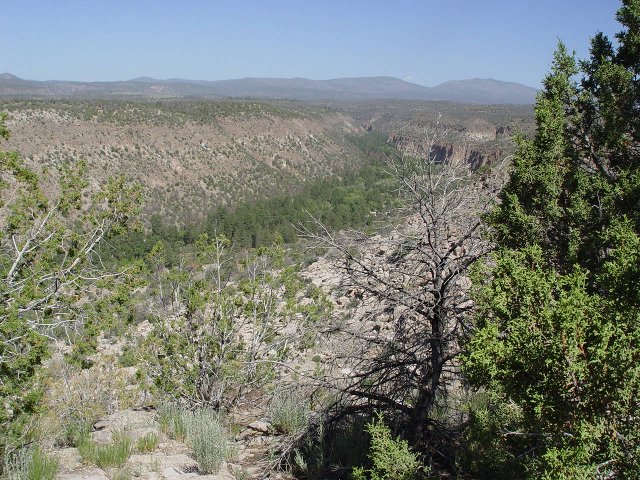
|
The canyon of the Rito de los Frijoles as seen looking north, from the entrance road along the South East canyon.
|
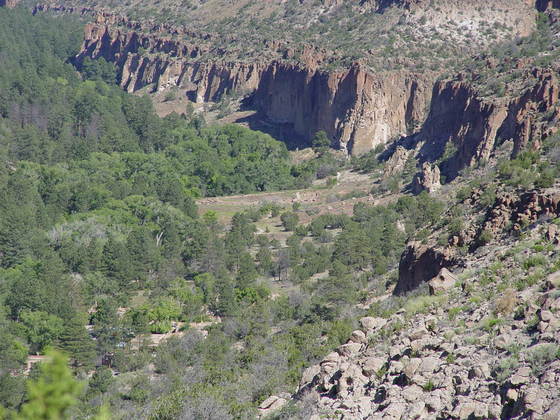
|
You can see their pueblo on the floor of the canyon, in the center of the pic.
|
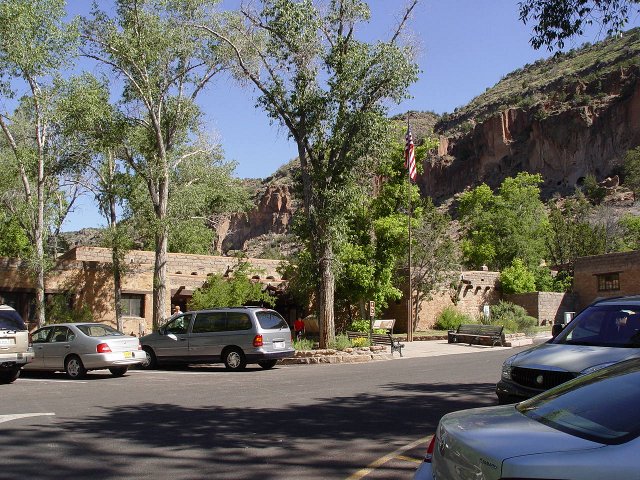
|
The ranger station at the South East end of the habitation.
You can see the North East canyon wall beyond the ranger station.
|
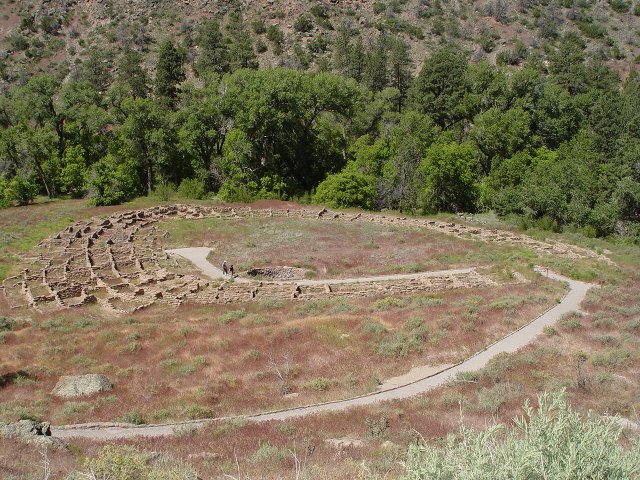
|
They had buit a pueblo on the floor of the canyon.
The Rito de los Frijoles is in the trees beyond the pueblo ruin.
|
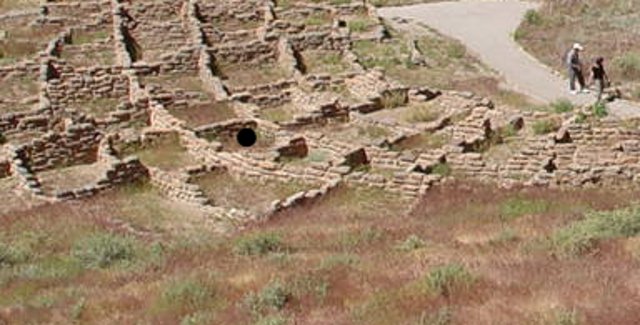
|
A little closer look at the masonry.
Remember this for when you look at Chaco masonry and remember these people were contemporaries (lived about the same time).
|
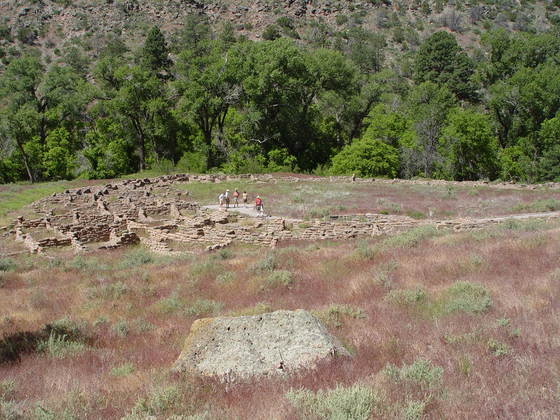
|
A little lower level shot of the pueblo.
You can see the masonry consits of relatively large rocks mortared together.
|
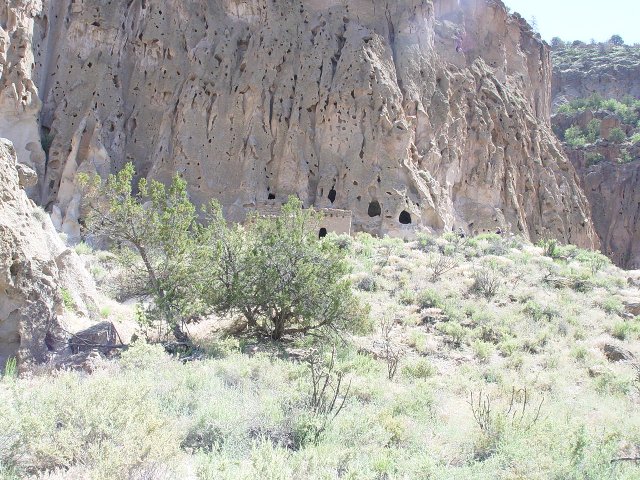
|
Part of the South East Canyon wall showing some of the habitaions.
|
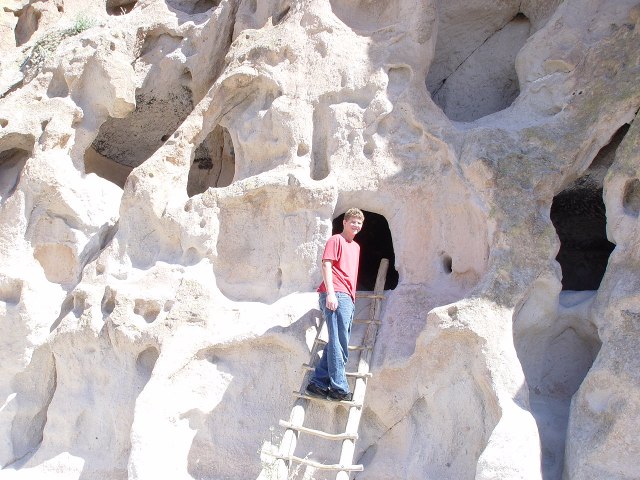
|
They had several levels of rooms hollowed out.
Note, the ceilings of the rooms are covered by smoke.
The fronts of these have worn away over the 800 or so years since they were built.
|
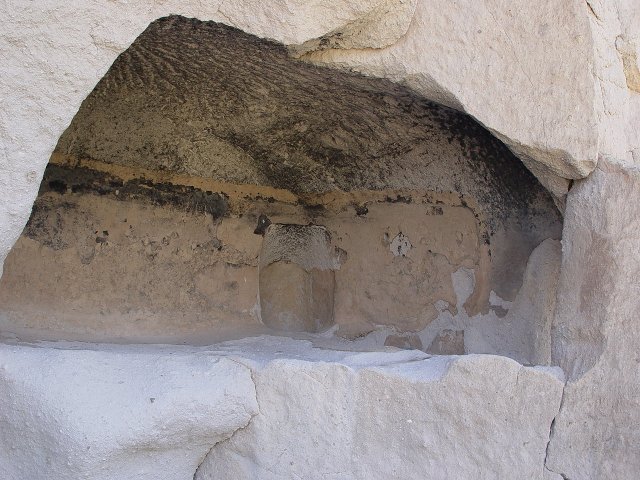
|
Here you can see a room with a small storage area in the rear, the ceiling is covered with smoke, and even a little mud plaster on the walls.
|
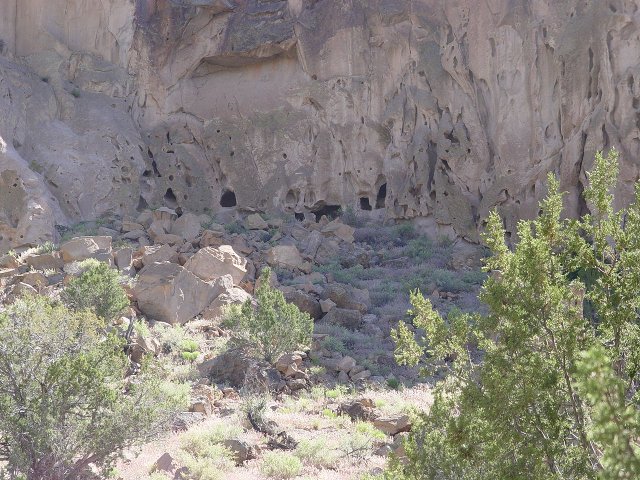
|
Another look at a different part of the canyon wall showing some of the many many cliff dwellings all along the canyon.
|
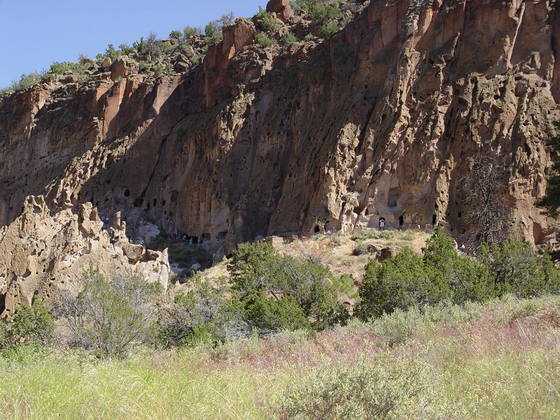
|
Another part of the canyon showing higher dwellings.
|
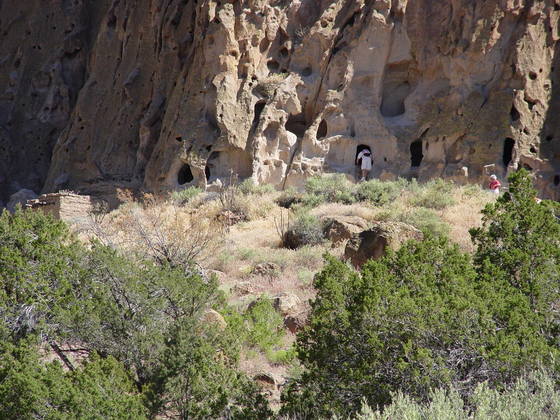
|
The front wall of some rooms has deteriorated badly over the 10 or so centuries since they were built.
|
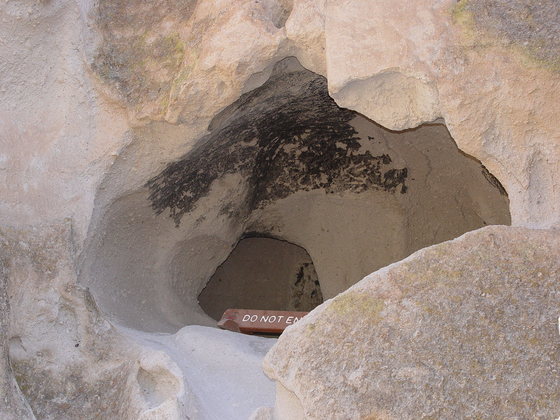
|
Closer look at a room with another room beyond and smoked ceiling.
|
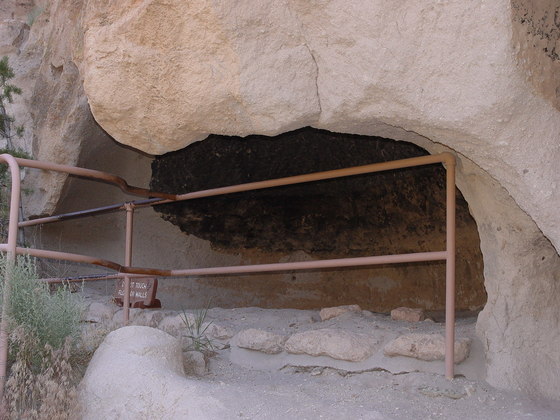
|
Large room showing the smoked cieling and some decorations on the wall.
|
Tsankawi
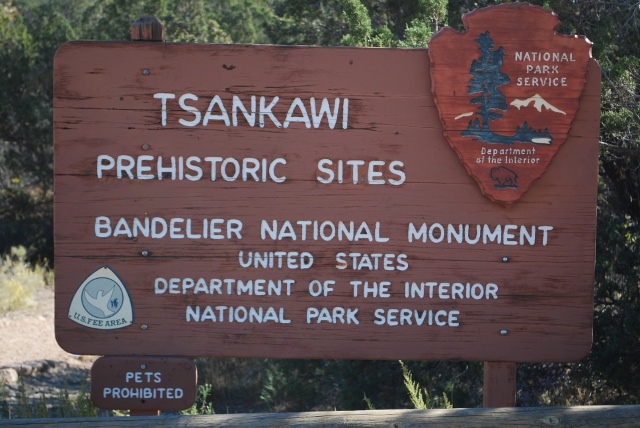
|
The sign at the parking lot (just a wide spot on the side of the road, but sufficient).
|
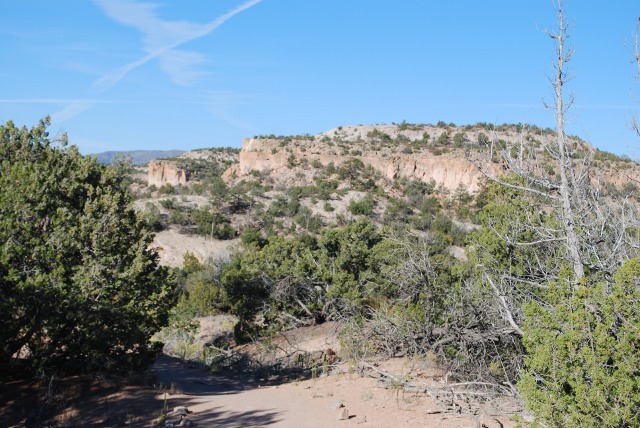
|
As you start up the trail, you can see the West end of the mesa.
|
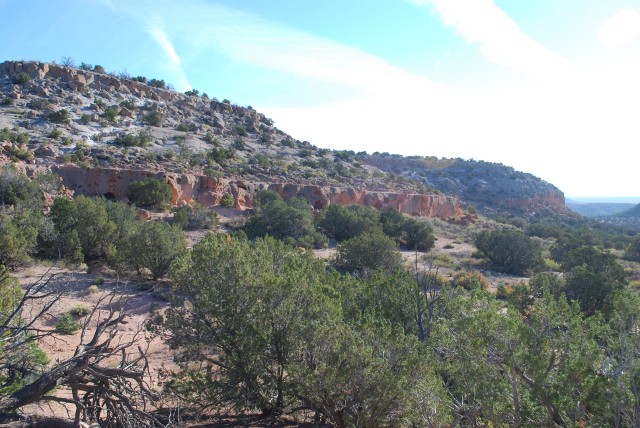
|
A little further along you can see the beginning of the "ledge" that covers almost the entire south side of the mesa.
You should also start to notice caves in the ledge.
|
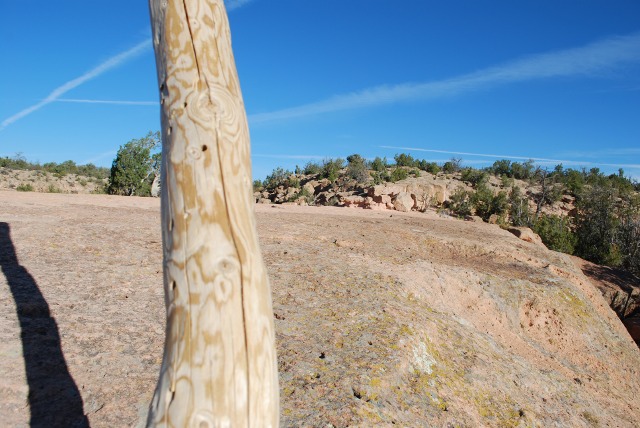
|
The first ladder you come to will lead to a large flat rock where the trail guide says the women of the pueblo gathered to grind corn (and probably gossip).
|
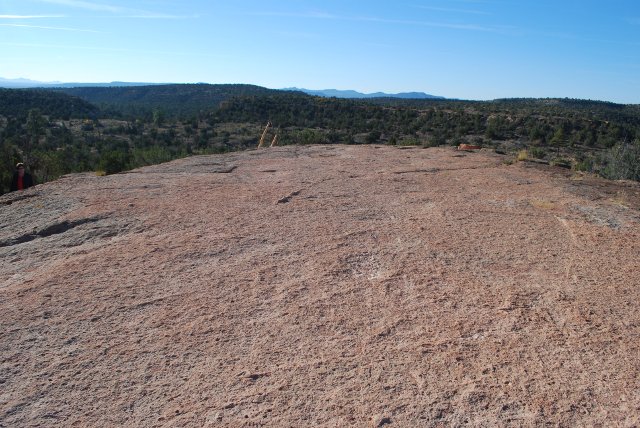
|
From the top of the flat rock looking Southwest, you can see the top of the ladder, and some of the Jemez Mountains in the distance (we are also in the Jemez Mountains).
|
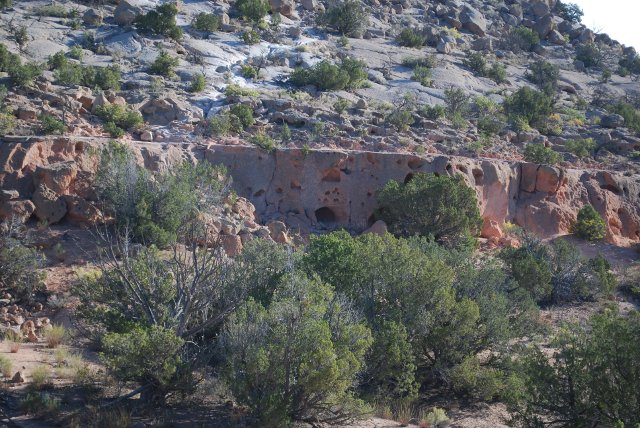
|
You start to see more caves in the ledge.
Housing at Tsankawi was the same as on the Rito de los Frijoles, but water was further away, at least today.
|
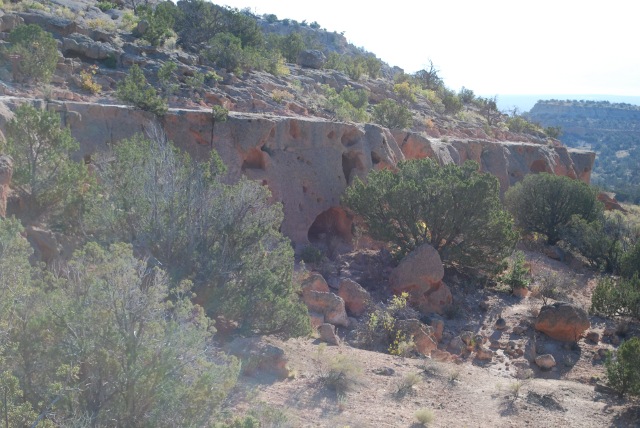
|
A little closer look at the rooms under the ledge.
|
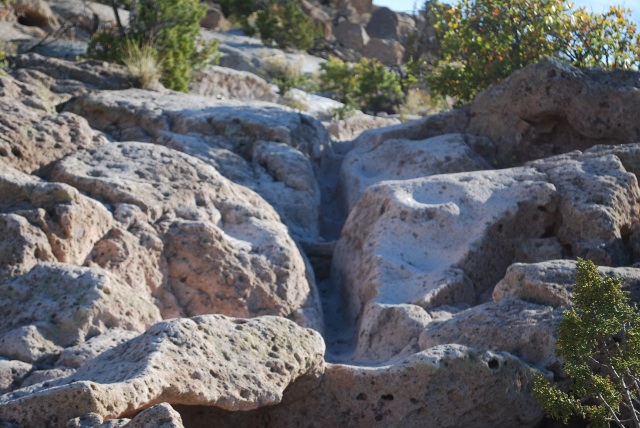
|
Centruries of feet (and natural erosion) wore these deep paths in the tuff.
|
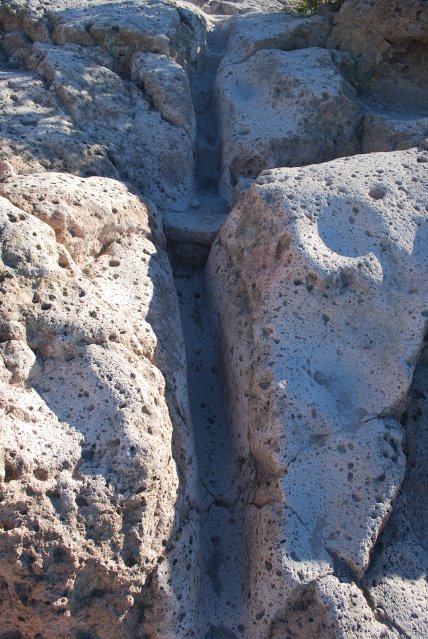
|
You see these in a lot of places on your trip.
|
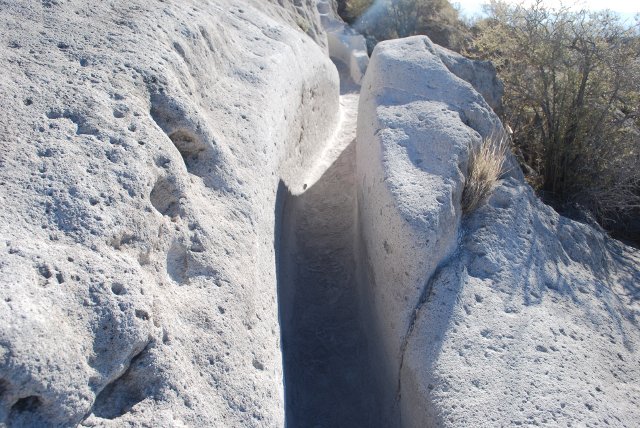
|
As I said these deep paths are everywhere.
|
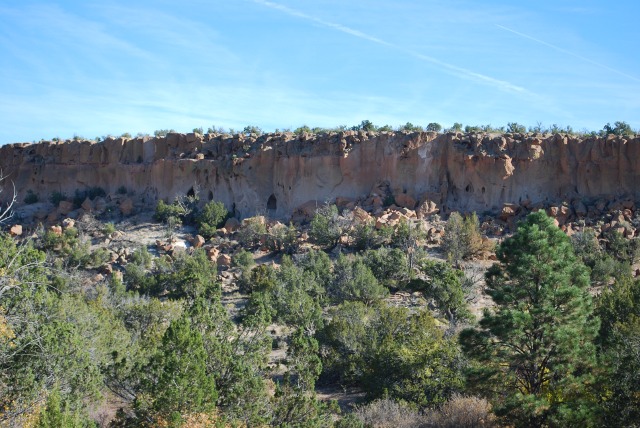
|
Lots of cave rooms in the side of the mesa.
|

























